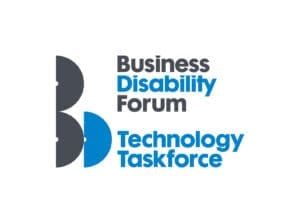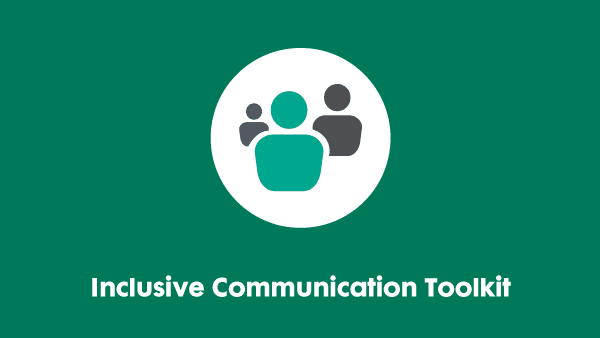Last updated: 4 August 2025
Making Excel spreadsheets accessible
This resource was created by our Technology Taskforce, a group of senior IT accessibility individuals from leading UK and global organisations. For more information, including how to join, see our website.

Introduction
Properly constructed, there are no issues with Excel and the Assistive Software (AS) used within the department. Everything in the Word section also applies to Excel documents, but there are some extra considerations that you need to make when in Excel.
About this guide
This guide is for people who are producing Excel 2010 (or later) documents for internal circulation, to upload to the Internet, or to load into Adobe presentations. It explains how to make them accessible to various assistive software (AS) IT packages.
AS packages enable people with disabilities to access information online or in electronic documents. The most common are for people with visual impairments, spanning the entire range up to people with no sight at all. Screen readers read out the content of documents, magnifiers enlarge a portion of the screen. Some are pure screen readers, others combine magnifiers with speech readers (‘speech option’).
Voice recognition packages are widely used by people with limited arm or hand mobility (including those with Repetitive Strain Injury – RSI) to move around electronic documents and enter text by speaking to the computer. They are also used by people without disabilities who need to dictate a lot of text, or to enter information into a system quickly.
Support packages for dyslexics tend to concentrate on enhanced literacy support, including predictive text, context-sensitive spellcheckers, homonym definitions, and the ability to change screen and font colours (which reduces the symptoms for many dyslexics).
In the UK, the Equality Act 2010 requires that both public and private organisations make reasonable adjustments to make our products accessible to anyone, regardless of what their disability may be. Many other countries have similar regulations. Unfortunately, authors of guidance or informational documents do not always know where the pitfalls are. This guide will tell you what to look out for, and how to set documents up correctly.
Apologies in advance if you feel anything here is too basic for your needs. Some users will have enough experience of Office not to need the in-depth guidance, just pointers on what to include to make something accessible. But this guide must also cater for people with only a basic knowledge, so it includes step-by-step instructions.
Table column headers
Because of its cell structure, screen readers do not know where an Excel ‘table’ starts –cell A1 is not always the start as there is often a title and explanatory text before the table.
So, when creating an Excel document, at the point where you want the information to be treated as a table of data, you need to label the column headers.
The best way to do this is to select the area of the table and use Insert/Table to mark it up as a table. Excel will check that the area you have selected is the right one (with a ‘Where is the data?’ dialogue box listing the selected area). Make sure the ‘My table has headers’ box is ticked, and OK the dialogue to designate the area as a table.
Alternative text in Excel
Make sure cells are given alt text where that is appropriate. If a user tabs into a cell without first going through a cell which says ‘Date of Birth’, for example, provide it with alt text that says ‘Date of Birth – format dd/mm/yyyy’. However, if the previous cell says ‘Date of Birth’ do not write it again in the alt text: AS users do not want to hear it twice. (See below about ‘steering’ people through cells.) It is, however, a good idea to provide the alt text telling them what format is required – it will also help the standard users who see it.
Navigation
Many people cannot use a mouse to navigate screens. Help them avoid excessive use of ‘Tab’ and ‘Arrow down’ by protecting cells which users will not need to access, choosing the option that protected cells cannot be selected. Then every time someone hits Tab they end up in a cell they need to read or complete. That saves a lot of time for standard users as well as those using AS. When you do this, make sure that the alt text includes the cell title (Date of Birth, etc.) as visually impaired users will not be able to ‘read’ the title in an adjacent cell. You should not protect (‘lock down’) any cell which contains information users may need – if they cannot see the screen, visually impaired users cannot access it.
Objects
It is possible to add objects (such as control buttons) on top of Excel spreadsheets. This should be avoided as they can only be reached by using the mouse, so they present a major barrier to those who cannot use one.
Text boxes
Do not use text boxes for overlaying chunks of narrative or explanation. When a screen reader user is tabbing through the document, their screen reader will only look at the Excel cells on the main worksheets, so they will not see text boxes unless they know to look for them. Even if they know there are text boxes there, navigating to them may make the screen reader lose their place in the main worksheets. The accessible way to achieve these narrative boxes is to use cells on the main spreadsheets, merging them if necessary to achieve the required look for standard users.
Final step
Your final check should be to run the built in accessibility checker. To use the Microsoft Excel accessibility checker, do the following:
- Select the ‘Review’ tab in the ribbon
- Select the Check Accessibility button.
This will highlight any potential problems. Address these problems before sharing the document.
Further information
Other documents in this series of guides on the topic of making Microsoft Office documents accessible:
- Creating accessible PDFs
- Making Microsoft Word documents accessible
- Making PowerPoint presentations accessible.
Other BDF resources:
If you require this content in a different format, contact enquiries@businessdisabilityforum.org.uk.
© This resource and the information contained therein are subject to copyright and remain the property of the Business Disability Forum. They are for reference only and must not be copied or distributed without prior permission.
